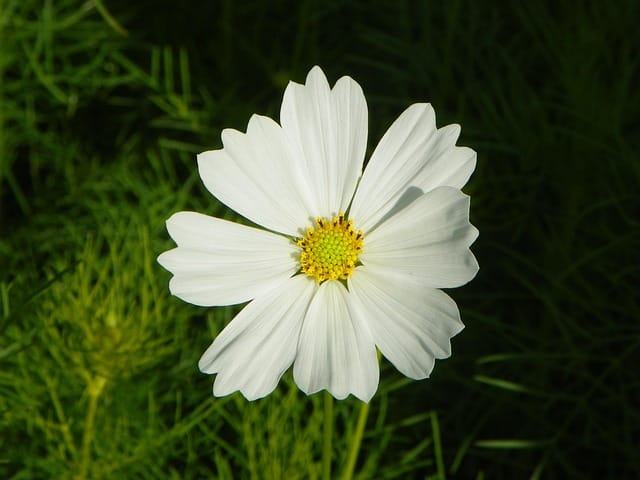Introduction
In the USA, August is the height of summer, a time when colorful gardens are in full bloom. However, many flowers begin to fade as the season progresses and temperatures rise. Deadheading can help with that. Removing spent blooms from your plants is a simple gardening technique that can help revitalize them and encourage continued blooming well into the fall.
In addition to making a plant look better, deadheading reroutes energy from seed production into new growth and blossoms. You can prolong the enjoyment of a vibrant garden for weeks or even months by carefully pruning some plants in August.
The ten plants you should deadhead in August for continuous blooms are discussed in this article, along with advice on how to do it properly.
1. Roses (Rosa spp.)
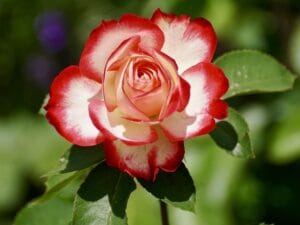
With the right care, roses, a traditional garden favorite, can bloom from spring through fall. Many rose varieties have already experienced their first flowering flush by August. Deadheading now extends their flowering season and helps stimulate new buds.
Why Deadhead in August:
Roses are eager to bloom again if spent flowers are removed before they set seed. This is especially true for hybrid tea roses, floribundas, and shrub roses.
How to Deadhead:
- Cut back the stem to the first set of five leaves beneath the faded flower.
- Use sharp pruners to make a clean cut at a 45° angle.
- Remove any yellowing leaves to prevent disease.
Extra Tip: Feed your roses with a balanced fertilizer after deadheading to encourage a strong second bloom.
2. Geraniums (Pelargonium spp.)
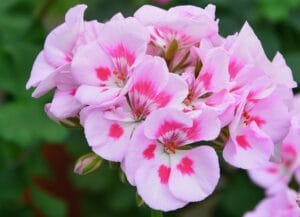
Bright, sun-loving plants, geraniums (Pelargonium spp.) are valued for their fragrant foliage and clusters of colorful blooms. They flourish in garden beds, hanging baskets, and containers, and bloom from spring to fall. Frequent deadheading in August promotes continuous flowering and keeps them looking fresh. Geraniums are a great way to add long-lasting color to patios, balconies, and borders while drawing pollinators like bees and butterflies. They are also easy to grow and, once established, drought-tolerant.
Why Deadhead in August:
August heat can cause blooms to fade quickly. Removing them keeps the plant neat and encourages a
How to Deadhead:
- Snap or cut stems at the base rather than just removing the petals.
- Remove any yellow or wilted leaves to improve airflow.
Extra Tip: Pinching back the plant in early August can also encourage bushier growth and more blooms in late summer.
3. Zinnias (Zinnia elegans)

Zinnias are colorful, low-maintenance annual flowers that give summer gardens striking bursts of color. They flourish in full sun and well-draining soil, and they bloom in red, pink, orange, yellow, and white hues. You can promote continuous blooms from summer through fall by deadheading spent flowers. Zinnias are a great option for bright, low-maintenance garden beds and cutting gardens because they draw pollinators and butterflies.
Why Deadhead in August:
Deadheading zinnias encourages rapid flower production and prevents the plant from looking leggy.
How to Deadhead:
- Cut the stem just above a pair of leaves or a new bud.
- Remove faded flowers regularly—every few days if possible.
Extra Tip: Zinnias attract pollinators, so avoid deadheading every flower at once; leave some blooms for bees and butterflies.
4. Coneflowers (Echinacea spp.)
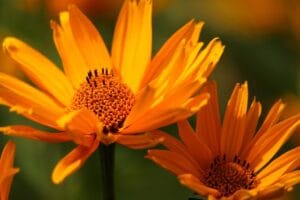
Hardy perennials that can withstand drought, coneflowers (Echinacea spp.) are distinguished by their daisy-like blooms with conspicuous cone-shaped centers. They add brilliant color to gardens and draw pollinators like bees and butterflies when they bloom from summer into fall. Deadheading in August keeps plants looking neat and promotes new blooms. Coneflowers are low-maintenance plants that grow best in full sun and well-drained soil. They come in purple, pink, white, and yellow varieties.
Why Deadhead in August:
Removing faded blooms now promotes new buds, keeping color in the garden into September.
How to Deadhead:
- Snip off flower stems just above the nearest set of healthy leaves.
- For a natural look, leave some seed heads later in the season for birds.
Extra Tip: In late August, you can allow a few blooms to go to seed to feed goldfinches in fall.
5. Petunias (Petunia spp.)
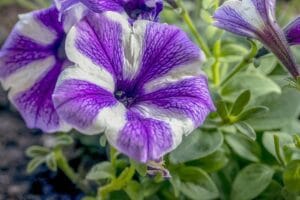
From spring until frost, petunias, which have a trumpet-like shape, add color to window boxes, hanging baskets, and gardens. Regular deadheading in August prevents them from developing seeds and keeps them generating new blooms. Bushier growth and longer-lasting color are promoted by pruning lanky stems and removing faded flowers. Petunias are a gardener’s favorite for continuous, low-maintenance beauty in sunny borders and containers because of their diverse array of colors and patterns.
Why Deadhead in August:
Petunias put more energy into seed production if faded blooms remain. Removing them ensures continued blooms until frost.
How to Deadhead:
- Pinch or cut stems just above a set of healthy leaves.
- For severely leggy plants, trim back by one-third to promote fresh growth.
Extra Tip: Feed petunias with a water-soluble fertilizer every two weeks after deadheading.
6. Cosmos (Cosmos bipinnatus)
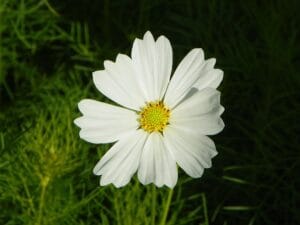
Charming daisy-like flowers, Cosmos (Cosmos bipinnatus) are distinguished by their feathery foliage and delicate petals. They give summer gardens a whimsical touch and bloom in pink, white, and magenta hues. Cosmos thrive in sunny locations with poor soil and are drought-tolerant and easy to grow. For pollinators and cut-flower arrangements, deadheading in August promotes continuous blooms until frost, which keeps the garden colorful well into the season.
Why Deadhead in August:
Deadheading encourages the plant to produce more blooms instead of forming seeds.
How to Deadhead:
- Cut stems back to a leaf node or side shoot.
- Remove faded flowers weekly to maintain constant blooming.
Extra Tip: For large plantings, use shears to lightly trim the tops for quicker deadheading.
7. Black-Eyed Susans (Rudbeckia hirta)
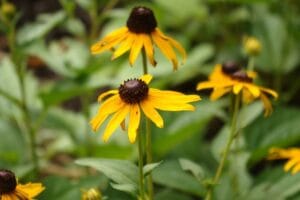
The cheerful, daisy-like perennials known as Black-Eyed Susans (Rudbeckia hirta) are distinguished by their dark brown centers and bright yellow petals. They bring brilliant color to gardens and draw pollinators like butterflies and bees when they bloom from midsummer to early fall. Your garden will remain vibrant well into the fall by deadheading spent blooms in August, which promotes a new crop of flowers. They are drought-tolerant, low-maintenance, and ideal for wildflower gardens or sunny borders.
Why Deadhead in August:
Encourages a second wave of blooms and keeps the garden looking fresh.
How to Deadhead:
- Cut spent blooms just above a leaf or branching stem.
- Avoid cutting all at once—leave a few for pollinators.
Extra Tip: Like coneflowers, Rudbeckia seed heads can feed birds in fall, so you can stop deadheading in late September.
8. Salvia (Salvia spp.)
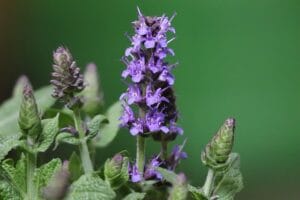
A colorful and adaptable flowering plant, salvia, also known as sage, blooms abundantly throughout the summer and into the fall. Salvia is a pollinator-friendly plant that is well-known for its tall, vibrant spikes and draws hummingbirds, butterflies, and bees. Deadheading in August preserves the plant’s neat shape and keeps the blooms coming. Salvia is a great way to add color to garden beds and borders because of its drought tolerance and low maintenance requirements.
Why Deadhead in August:
Keeps blooms coming into fall and prevents the plant from getting woody or tired-looking.
How to Deadhead:
- Cut flower spikes down to a side branch or new bud.
- For a fuller look, trim back the entire plant by one-third.
Extra Tip: Salvias attract hummingbirds, so stagger deadheading to ensure there’s always something blooming.
9. Marigolds (Tagetes spp.)

Marigolds (Tagetes spp.) are happy, sun-loving flowers that add vivid yellow, orange, and gold hues to gardens. They grow easily and do well in most types of soil, and they bloom from summer to fall. Frequent deadheading in August stops seeds from forming and keeps them blooming. Marigolds are a common companion plant in flower and vegetable gardens because they naturally repel pests. They are ideal for novice gardeners due to their resilience.
Why Deadhead in August:
Encourages marigolds to keep producing flowers well into fall.
How to Deadhead:
- Pinch off faded blooms just above a set of leaves.
- Regularly check plants, as blooms fade quickly in summer heat.
Extra Tip: Deadheading marigolds can also help prevent fungal issues by improving airflow.
10. Daylilies (Hemerocallis spp.)
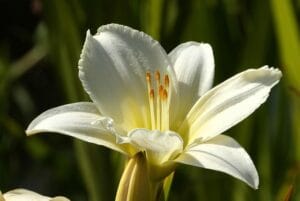
Daylilies (Hemerocallis spp.) are tough, easy-to-care-for perennials that are loved for their beautiful, trumpet-shaped flowers that only last one day. Many types bloom again when they are well cared for, and they bloom from early summer to late summer. Cutting off spent flowers in August keeps the plants looking neat and encourages more blooms in types that bloom again. Daylilies do well in full sun, can grow in different types of soil, and are great for borders, mass plantings, and colorful summer displays.
Why Deadhead in August:
Keeps plants looking fresh and prevents seed pod formation.
How to Deadhead:
- Snap or cut spent blooms from the stem daily.
- Remove the entire flower stalk when all blooms are finished.
Extra Tip: Reblooming daylily varieties especially benefit from August deadheading for a late-season show.
Tips for Successful Deadheading in August
- Use Clean, Sharp Tools – Prevent disease spread by cleaning pruners before use.
- Cut at the Right Spot – Always cut back to a healthy leaf or bud.
- Don’t Remove Too Much at Once – Over-pruning can stress plants in summer heat.
- Water After Deadheading – Helps plants recover faster.
- Fertilize Appropriately – Use a balanced fertilizer to promote new blooms.
- Work in the Morning or Evening – Avoid midday heat to reduce plant stress.
Common Deadheading Mistakes to Avoid
- Leaving too many seed heads (unless feeding wildlife is the goal).
- Cutting too far down and removing healthy growth.
- Ignoring spent blooms until the plant has gone to seed.
- Using dull tools that crush stems instead of making clean cuts.
Benefits of Deadheading in August
- Prolongs blooming season.
- Keeps plants looking tidy and attractive.
- Encourages healthier growth.
- Prevents unwanted self-seeding.
- Attracts more pollinators by ensuring a constant supply of fresh blooms.
FAQ
1. What does deadheading mean in gardening?
Deadheading is the process of removing spent flowers to encourage new blooms and maintain plant health.
2. Is August too late to deadhead plants?
No, August is a great time to deadhead many plants for a late-season flush of flowers.
3. Can I deadhead in hot weather?
Yes, but it’s best to do it in the morning or evening to avoid stressing plants.
4. Should I fertilize after deadheading?
Yes, feeding plants after deadheading can boost new flower production.
5. Do all plants need deadheading?
No, some plants are self-cleaning and don’t require deadheading.
6. Will deadheading make plants bloom forever?
It won’t make them bloom forever, but it can significantly extend the blooming season.
7. Is deadheading different for annuals and perennials?
The technique is similar, but perennials may need deeper cuts to stimulate new growth.
8. Can I compost deadheaded flowers?
Yes, as long as they’re disease-free.
9. What happens if I don’t deadhead?
Plants will often produce seeds instead of new flowers, shortening the blooming period.
10. Can deadheading damage plants?
Only if done incorrectly—cutting too far down or removing healthy growth can stress plants.
Conclusion
One of the simplest and most effective ways to keep your garden healthy into late summer and beyond is to deadhead it in August. You can enjoy a burst of color well into the fall months by cutting off the faded flowers from these ten plants: roses, geraniums, zinnias, coneflowers, petunias, cosmos, black-eyed Susans, salvias, marigolds, and daylilies.
It’s an easy thing to do that will give you longer-lasting beauty, healthier plants, and a more colorful garden. This August, take your pruners outside and give your flowers the new life they need.

